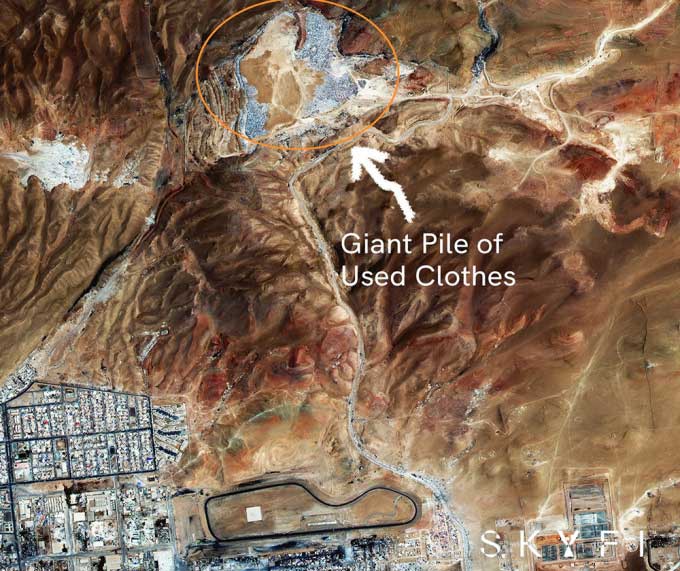The massive landfill of “fast fashion” clothing in the Atacama Desert is so large that it can be seen clearly from satellites.
The Atacama Desert, Chile, has a “graveyard” of clothing that continues to expand. These are discarded or unsold garments, primarily produced in Bangladesh or China, then shipped to retail stores in the United States, Europe, and Asia, before being sent to Chile when they remain unsold, Business Insider reported on May 23.

Satellite image shows the massive pile of clothing waste in the Atacama Desert, northern Chile. (Photo: Skyfi)
At least 39,000 tons of such clothing accumulated in the Atacama Desert by 2021, according to AFP. They are primarily “fast fashion” – cheap clothing produced quickly according to the latest trends.
SkyFi, a developer of satellite photo and video applications, shared high-resolution satellite images of this clothing graveyard on May 11. “The images have a resolution of 50 cm, classified as Very High Resolution and captured by satellites. They show how large the mound of waste is compared to the city below.”, wrote SkyFi.
This clothing is not sent to city landfills because it is non-biodegradable and often contains chemical products, according to Franklin Zepeda, founder of EcoFibra, a company working to reuse clothing by creating insulation panels.
The mountain of unused clothing is located near the port of Iquique, about 1.6 km from some of the poorer neighborhoods of the city. The landfill sometimes attracts migrants and local women who come to search for items they can wear or sell.
The fast fashion industry contributes 2% – 8% of global carbon emissions, the United Nations stated in 2018. According to an article on Insider in 2019, nearly 85% of clothing products are discarded each year, and the production of fashion consumes a vast amount of water while polluting rivers. The Ellen MacArthur Foundation in the UK estimates that every second, about one garbage truck full of clothing is incinerated and sent to the landfill.





















































